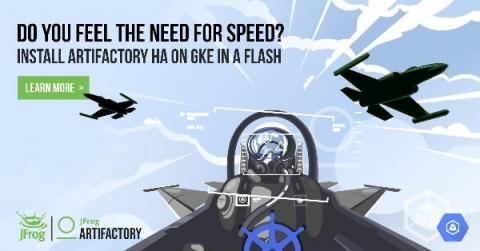Operations | Monitoring | ITSM | DevOps | Cloud
CI CD
The latest News and Information on Continuous Integration and Development, and related technologies.
Sharing and Reusing Infrastructure with Pulumi and Artifactory
How to Pick a Winning Go Module
With a near-endless list of Go Modules, it can be overwhelming trying to decide which is best for your Go build. For new Go developers, it can be difficult to pick a winner for your specific use case. This phenomenon is nothing new. In fact, it’s one of the reasons why open-source is so important for developers. Oftentimes, when a module is published by a developer, it was likely developed to solve a specific problem that they are facing.
Migrating from the Codefresh registry to Google Container Registry
On July 15th the Codefresh registry that is part of all Codefresh accounts will be removed from service. The removal is part of a big round of improvements to our native integration with Docker registries. We have invested significant efforts in using Codefresh as a unified platform for Docker images and the way they are used inside CI/CD pipelines. More details on the migration actions for the Codefresh registry can be found in our timeline announcement.
Cloudsmith: Your Offsite DevOps Team
Cloudsmith can help reduce the amount of resources you need to devote to package management and DevOps, whilst delivering a better service to your teams than ever before. Here’s how and why. Package management is right at the heart of DevOps. Packages are both inputs and outputs in the DevOps process, and indeed many individual packages are both. Effectively, packages are the currency that engineers work in.
Impact for Everyone! [Twitch]
Install Artifactory HA on GKE in a Flash
Installing Artifactory on GKE, or on any Kubernetes cluster for that matter, can be complex. You have to think through several scenarios, switch back and forth between UI and command line, create a lengthy Helm command, search for acceptable parameters … and so on. All this before you have to configure certificates, licenses, database settings, node settings. But there’s more, what about future proofing it?
A Smooth Operator to Run JFrog Enterprise on OpenShift
Red Hat OpenShift and JFrog Artifactory are a smooth fit together for cloud native, containerized software development at enterprise scale. With the new availability of OpenShift operators certified for JFrog Enterprise, that fit now fastens tight.











